Bone marrow cell transplantation, avoiding leg severance!: Healthy bodies come from normal blood vessels
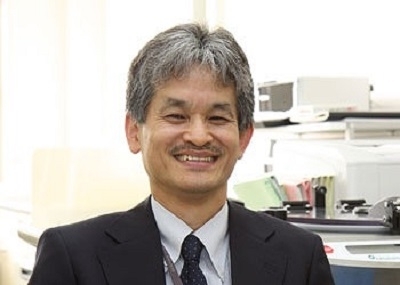
In this edition of Research NOW, we interviewed Associate Professor Yukihito Higashi, Division of Molecular Medical Science, Programs for Biomedical Research, Graduate School of Biomedical Sciences.
(2010 January 4th, Interviewed by Community Collaboration and Information Policy Office)
Profile
In middle school, young Higashi loved insects and animals, and his interest did not wane once he entered High school, but he became infatuated with them. In his second year of high school when the time came for young Higashi to make a selection between humanities and science courses, he was told by his biology teacher that if he joined the Faculty of Medicine, he would be able to deepen his knowledge of biology, and chose the path of life sciences, eventually going on to enter the Faculty of Medicine at University. He proceeded by graduating from Hiroshima University’s Faculty of Medicine. After passing the national exam for medical practitioners, he set his sights on cardiovascular internal medicine, and therefore assigned himself to the department of internal medicine. After completing the research that had him rotate between the diagnosis and treatment department (at the time: introduction to internal medicine, intermediary internal medicine, advanced internal medicine, and hematology medicine), he spent 3 years at a private hospital, after which he finally arrived at our department of cardiovascular internal medicine. Belonging to the high blood pressure research group, he works with blood vessels on a daily basis.
Research of the Endothelial Function
Currently, there are thirty million hypertensive patients in Japan. As a result of westernized eating habits, predictions are for this number to increase. Treatment for hypertension includes taking medicine (anti-hypertensive agent, high cholesterol medicine, and others of the sort), consumption control (low sodium etc.), dieting, and aerobic exercise. Professor Higashi says that these methods can control and have positive impacts on preventing lifestyle disease.
The endothelium has the surface area of six tennis courts, the weight of a liver, and is the largest organ in the endocrine system. Although I was able to find this to be amazing when I first heard this, I don’t really understand what this means, but have enough intuition to gather that it would be terrible if something was to happen to the vascular endothelium. In recent years, for some unknown reason, vascular endothelium cells have been getting impaired, leading to arteriosclerosis. In 1990, Dr. Panza of United States’ National Institute of Health (NIH) has shown for the first time that endothelial function is impaired in patients with hypertension. One of the causes of vascular endothelium impairment was believed to be oxidation stress. However, in 2002, Professor Higashi’s group was the first to provide proof that endothelial damage and arteriosclerosis is indeed caused by oxidation stress.
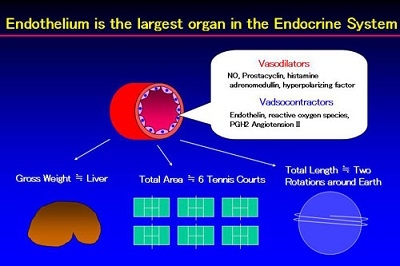
In 1993, Associate Professor Higashi encountered a research publication at the Japanese Circulation Society. Endothelial cells begin with blood vessel dysfunction, which then develops into arteriosclerosis. The publication had to do with nitric oxide (NO), one of the factors that plays an important role in vascular function and structure. “How interesting!” he thought, and he continued to delve further into his research of the endothelial function.
Vascular endothelium at first was considered to be a blood barrier between the lumen and the vascular wall, but in the 1980’s, endothelium was discovered to secrete and produce various substances. In 1990, it was discovered that nitrogen monoxide (NO) was a necessary substance that expands blood vessels. Between 1990~1995 there was a series of discoveries in succession, after which the researcher (Dr. Murad) discovered that this was a process that renews itself, in 1998. The two researchers (Dr. Furchgott and Dr. Ignarro) who detected the aforementioned discovery (that vascular endothelium produces various substances in the form of NO) won the Nobel Prize in Physiology or Medicine for their discoveries concerning “NO as a signaling molecule in the cardiovascular system.”
In order to live a lifestyle that does not cause cardiac infarction, Professor Higashi thought an objective to improve the quality of life (QOL) would work, but even the use of medical treatment and catheters treatment which expand blood vessels did not prove to better the symptoms. While sifting through the medical examination results of all the patients who suffer from chronic diabetic complications, he came across a certain patient whose foot was troubling him. Professor Higashi became desperate to help this patient, who was already in the latter half of his 90’s, and was suffering from artery stenosis and obstruction, and had reached a point where his vascular endothelium would not improve.
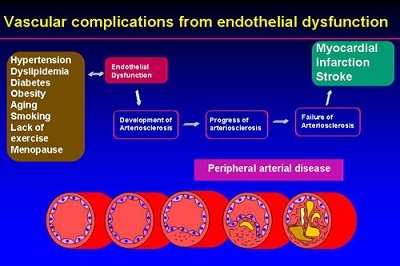
Cases of complications that led to amputation
With lifestyle diseases such as diabetes mellitus, blood vessels get thinner and periphery vessels get blocked, leading to arteriosclerosis obliterans which is noticeable by necrosis in the fingertips. Because susceptibility to infectious disease rises, not just with fingers but also with feet, it is sometimes necessary to amputate buttocks or calves that foster healthy blood vessels. Every year, there are about 10,000 people throughout Japan (estimated 250-300 in Hiroshima prefecture) where internal or surgical treatment does not succeed, and feet must be amputated.
Since 1997, it has been known that when wounds or cancer cells are found in blood vessels, blood vessel regeneration occurs, leading to tissue regeneration, and the cells that make up blood vessels (progenitor cells) were discovered. Associate Professor Higashi and his group believed that if this is true, they should be able to take out these cells, and allow blood vessel and tissue regeneration to occur in other patients. This group worked with other schools (Kansai Medical University, Kurume University, and Jichi Medical University) and conducted animal experiments (rabbits) to see if it was possible for blood vessel regeneration to occur.
Leg amputation avoided by bone marrow transplant!
In 2000, Kansai Medical University began practical use of this clinic on patients. Because the ethics committee of Hiroshima University’s hospital was a little late in granting approval for this project, the first of this kind of treatment in the Chugoku and Shikoku regions of Japan began in April, 2002.
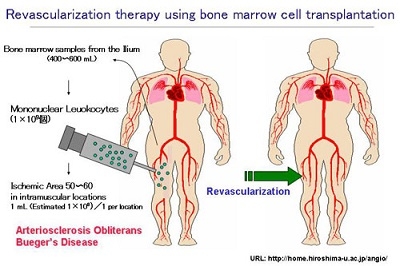
Harvesting bone marrow cells from the ileum of each patient, and separating bone marrow cells which are the basis of blood vessels (mononuclear leukocyte), we inject (mononuclear leukocyte) the affected region of the muscle.
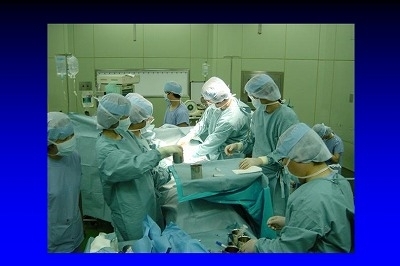
A scene of surgery
After about 4 weeks, the affected region began producing new blood vessels, and warmth in the foot was restored. The feeling of numbness and pain was also reduced. With the mitigation of the symptoms of arteriosclerosis, this was the moment where it became clear that amputation of the foot can be avoided despite the necrosis. Between April, 2004 when the project began, and the end of December, 2009, the number of cases where feet were preserved using regenerative medicine has reached 60.
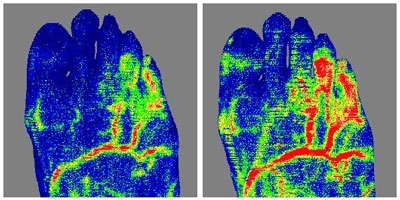
Blood flow measurement by laser Doppler blood flow imaging (before transplant, 4 weeks after transplatation)
A new research result –From differentiation to mobilization-
At first, the injected mononuclear leukocyte becomes the precursor cell was thought to regenerate (differentiate), but recently, most mononuclear leukocytes die right after being transplanted. It has become clear that when the mononuclear leukocyte dies, other precursor cells are called (mobilized) from bone marrow to that region to allow blood vessel regeneration to occur.
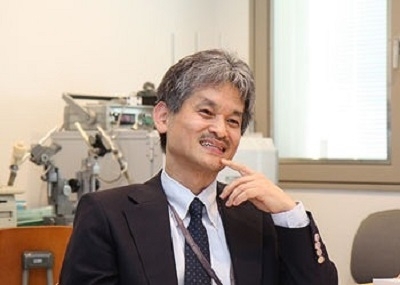
“It wasn’t ‘differentiation’ but rather ‘mobilization’,” says Associate Professor Higashi.
The number of medical institutions which incorporate transplantation has increased, and new research results have been produced as a result of the treatment environment. A patient, who visits every Thursday afternoon for imported blood vessel function regeneration, is one of 100 who suffer from Buerger’s disease or arteriosclerosis obliterans. This number is increasing at a rate of 3~4 new patients per week. In June, 2008 at Hiroshima University hospital where cell transplantation (only related to the foot) has been implemented together regularly with health insurance treatment, has been designated as an advanced medical treatment facility. In response to this, the university hospital established a “regenerative medicine department.”
*Link to the Regenerative Medicine Department (Japanese Page)
Goals from here on out
Because cell transplantation treatment worked for the feet, Associate Professor Higashi said “now I want to proceed to working with skin, liver cells, and the heart, but unfortunately, there will not be an effect on about one third of the patients. I want to be able to do something to help these people,” he said to establish his attempt to find new treatment methods.
“With the oxidative stress of most diseases as the cause for vascular endothelium, I am sure more people will be willing to donate their bone marrow liquids to bone marrow banks. It is very possible that the day where regeneration can occur in organs besides just the foot is near; even heart muscle and hair. Along with the establishment of bone marrow bank centers, as someone who is engaged in treatment in Hiroshima, I would like to provide emergency regenerative treatment to radiation injury,” Associate Professor Higashi said as he shared with us his hopes from hereinafter.
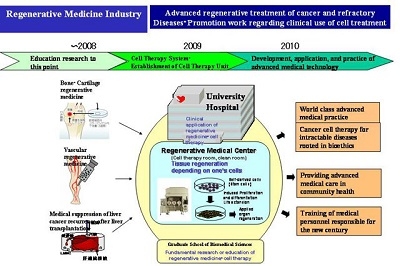
Afterword
I apologize for this unrelated story, but on New Year’s Day, the sight of astronaut Souichi Noguchi giving a New Year greeting from the International Space Station, which was reported via TV and newspaper. In May, 2006, when Hiroshima University’s Higashi-Hiroshima astronomical observatory (Hiroshima Astrophysical Science Center) was completed, he came and gave a lecture, and as a familiar face to the Hiroshima University community, I felt a sense of nostalgia while watching him during New Year vacation. (Mr. Noguchi is working with the International NGO World Vision Japan and is also a child sponsor. I am a huge supporter of his, and hope it is okay that I introduced him in this article.) Well, for whatever reason, as soon as we entered the New Year, Mr. Noguchi suggested collecting data for Research NOW. With that, the feeling of New Year break disappeared immediately. Therefore, after spending an unusual New Years, on the 4th, as if there was no vacation at all, we immediately began collecting data for the next edition.
*Hiroshima Astrophysical Science Center (Japanese Page)
*The Website for the International NGO World Vision Japan (Japanese Page)
I am not a secret agent for World Vision. So I would also like to share a few words for the UNICEF organization. In October, 2005, Agnes Chan was awarded this years “Pestalozzi Education Award” and gave a lecture at Hiroshima University. Afterwards, in an attempt to spread the UNICEF activity network within Hiroshima prefecture, the Japan UNICEF organization acknowledged this as an official movement, and in March of 2006, the Japan UNICEF organization established a Hiroshima branch. The president is Hiroshima University’s President Asahara.
*Details of the Pestalozzi Education Award (Japanese Page)
*The Japan UNICEF organization Hiroshima Prefecture branch website (Japanese Page)
After listening to Professor Higashi’s story, and finding out that every year ten thousand people are forced to amputate their feet, to be honest I was astonished. He showed me many images, but they revealed such miserable states that I could not post them on the web. Exactly what does it mean that though there are people who can avoid severing their legs and walk again on their own two feet, this treatment does not have an effect on one third of the patients? Going full speed towards becoming overweight myself, please find a solution before I am diagnosed with diabetes, professor! (O)


 Home
Home

